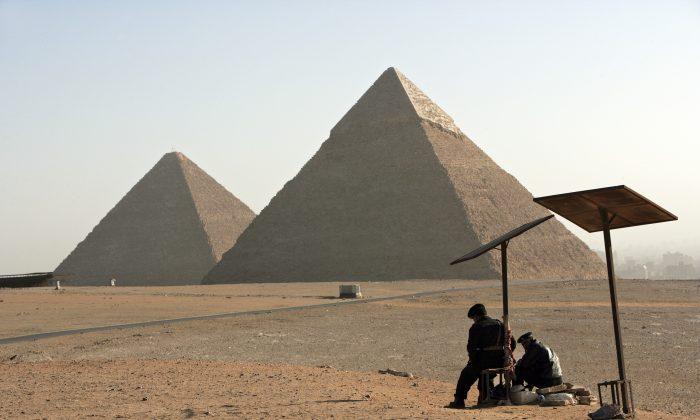Archaeologists believe they have found a secret room in the Great Pyramid of Giza. They made the discovery while using subatomic particles to discover hidden structures in the pyramid thus allowing scientists to map areas they wouldn’t otherwise be able to reach easily. The scientists believe the data they have collected indicates there is a room, but they cannot yet pinpoint its location, as Yahoo News reported.
The ScanPyramids project started in 2015, and involves international scientific institutions using cutting-edge technology to peer inside the pyramids. Researchers involved with the project are using “infrared thermography, muon tomography and 3D reconstruction techniques,” according to a press release.
The project released a round of findings in October 2016 that stated it had possibly discovered a secret room, but have yet to confirm what the structure is. After muon particle analysis, they found the muon movement indicated a void of some kind.
There are disputes about whether the findings truly indicate a room or just a structural anomaly. The advanced methods of measurement allow researchers to access the pyramid’s structure in a way that is noninvasive; they won’t have to dig or deconstruct anything, or dig and blast with dynamite as was done in the past, but it also presents issues with the believability of the findings.
As LiveScience reported, the 4,500-year-old Great Pyramid of Giza is Egypt’s largest pyramid. It was built by order of the Pharaoh Khufu. It is one of three pyramids in Giza. It was at one time the tallest structure in the world, standing 481 feet when it was completed. It held that title until the 14th century, when the Lincoln Cathedral in England was built to completion.
The LiveScience article casts doubt on celebrating the findings to quickly. It brings up an incident where scientists thought Queen Nefertiti had a secret chamber behind the tomb of King Tut. No such chamber was ever confirmed.
Former Antiquities Minister Zahi Hawass doesn’t believe the group has made substantive finds. He calls the discoveries “anomalies” and “small voids” according to the Yahoo article.
The project receives funding from the Heritage Innovation Preservation Institute. They updated the public periodically on the progress of the research through social media and website news releases.





